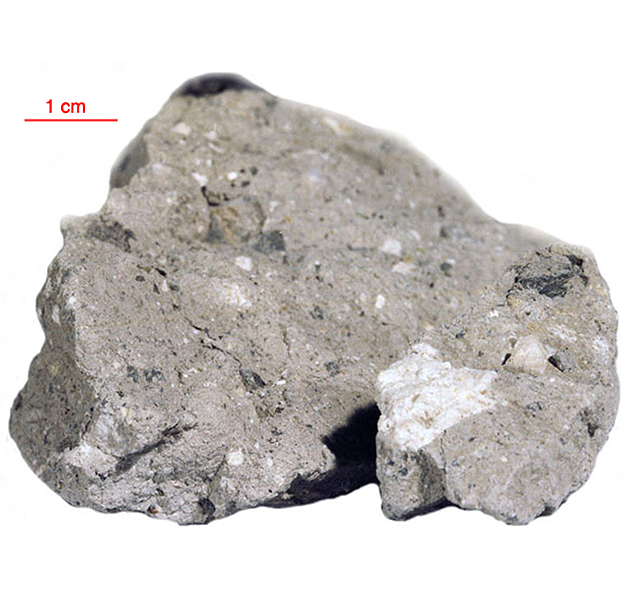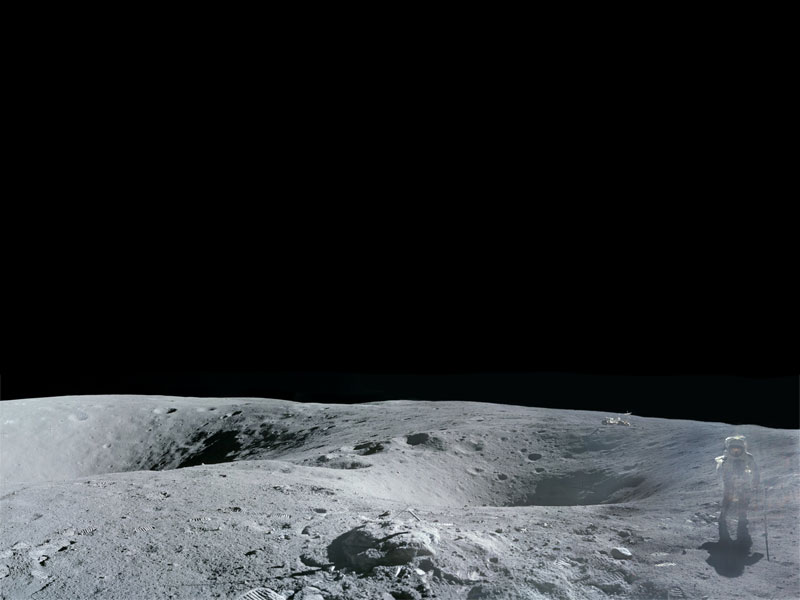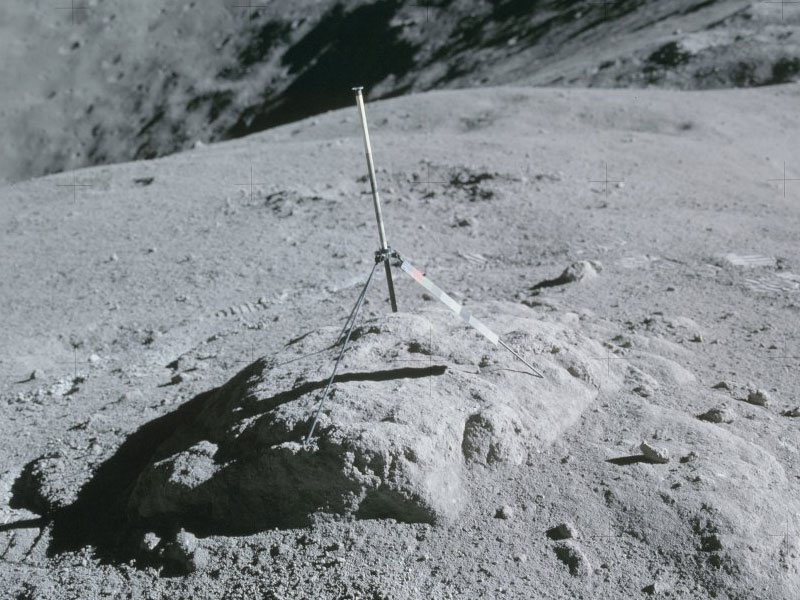
Fact sheet
Sample 61295 is a typical regolith breccia collected during the Apollo 16 mission to the Moon. The sample was chipped off a large boulder, 2 metres in diameter, on the rim of Plum Crater. The rock is a friable, light-coloured matrix breccia with both light and dark clasts. The outer surface of the sample is rounded and has many micrometeorite pits.
In thin section the sample has a friable and porous matrix with a high glass content, which indicates it was a soil before being welded into a rock by a meteorite impact. The lithic clasts include feldspathic impact melts, feldspathic granulites, aphanitic breccias and poikilitic impact melts. Plagioclase feldspar is abundant. Glass shards and beads are present and some glasses have Mare basalt composition.
Further details of this and other Apollo samples are here: http://curator.jsc.nasa.gov/lunar/
The Apollo 16 landing site was in the hilly region around Descartes crater in the lunar highlands. The landing spot was chosen to allow the astronauts to gather geologically older lunar material (Descartes Formation and the Cayley Formation) than the samples obtained in the first four landings, which were in or near lunar maria.
The mission lasted 11.1 days, with a stay on the lunar surface of 71 hours. The crew were on the lunar surface for 20.2 hours during which they traversed approximately 27 kilometers and collected approximately 96 kilograms of samples.
Apollo 16 was launched on 16 April 1972.








